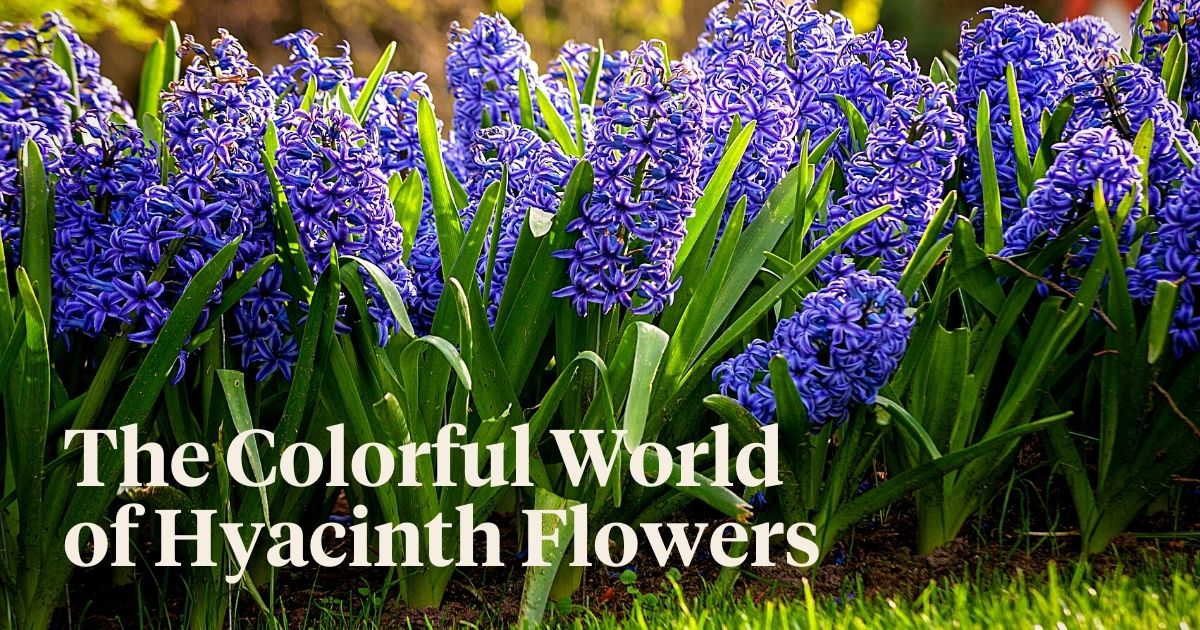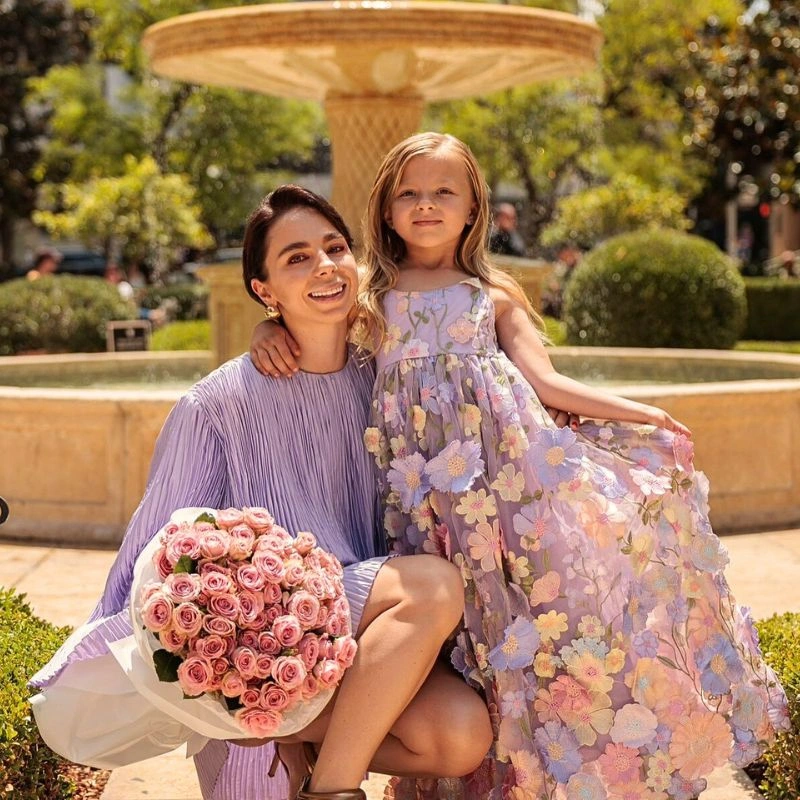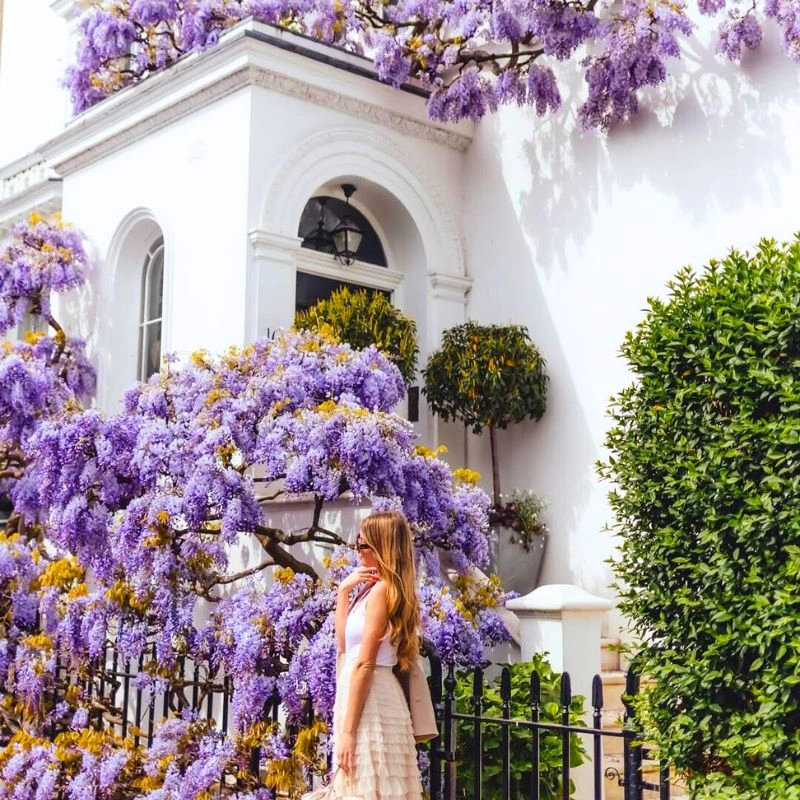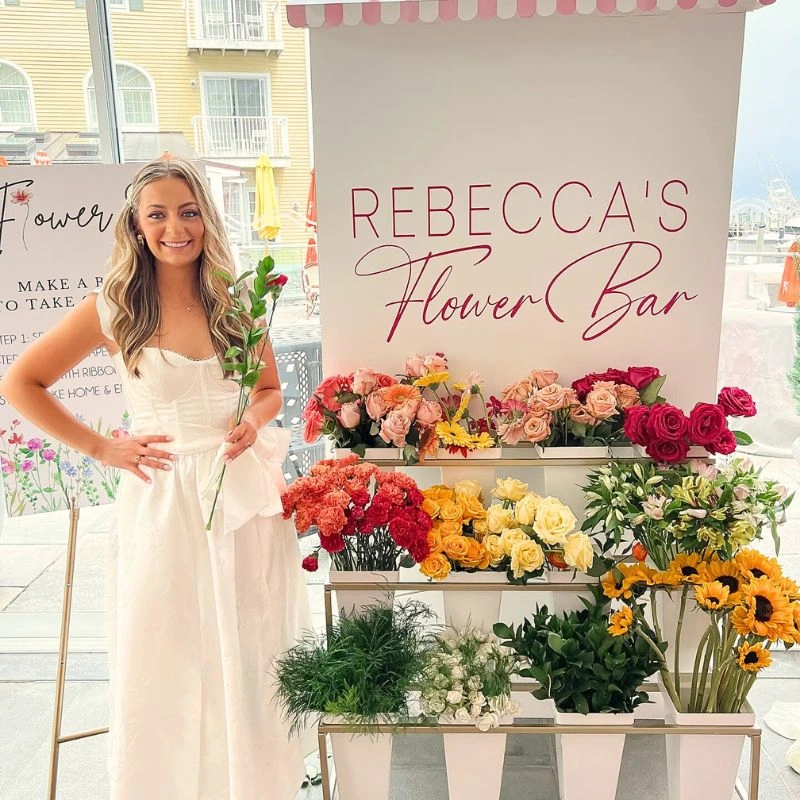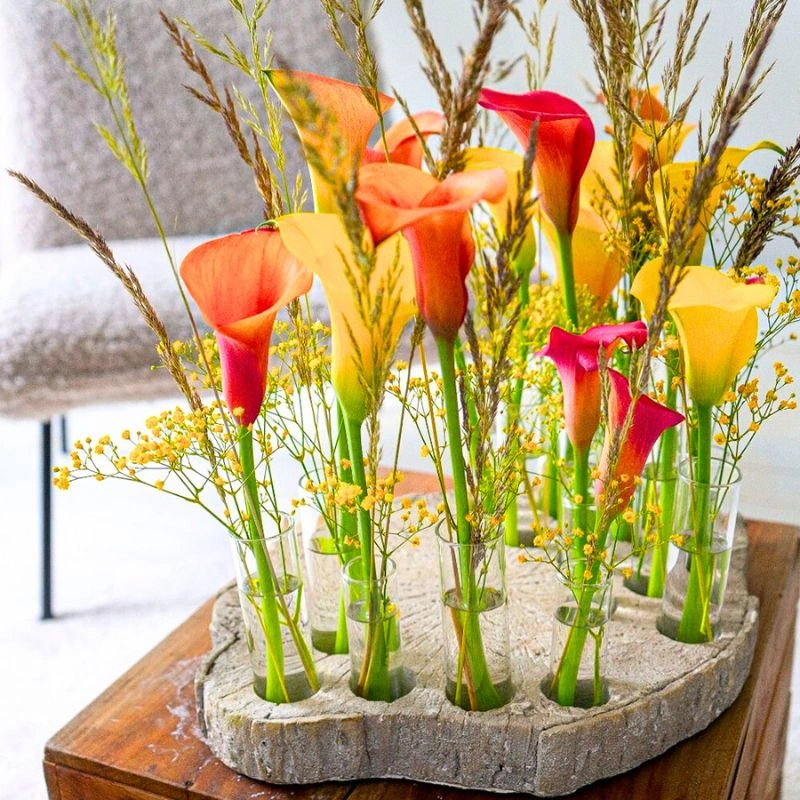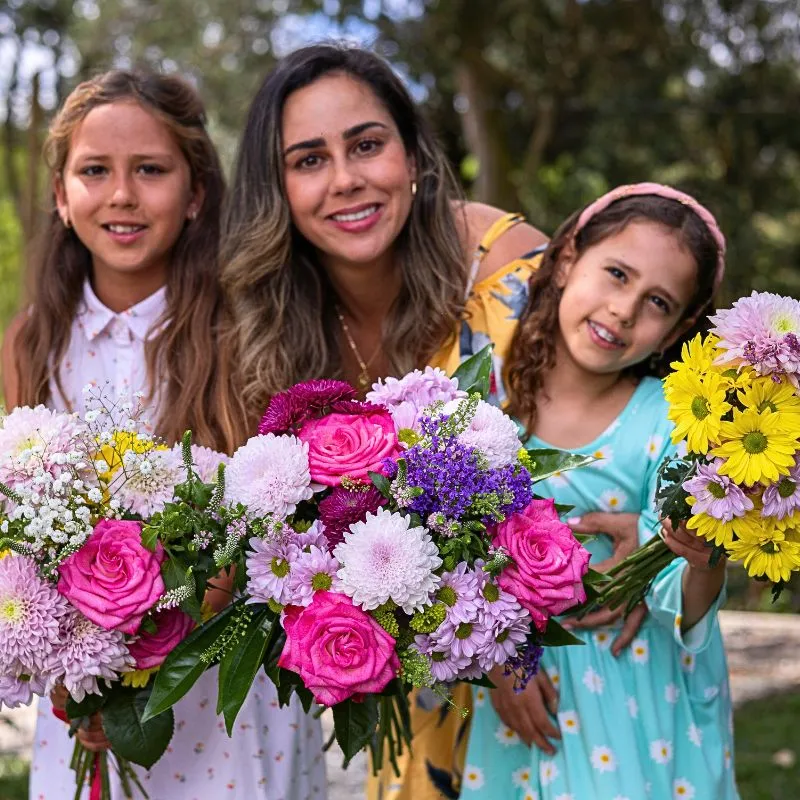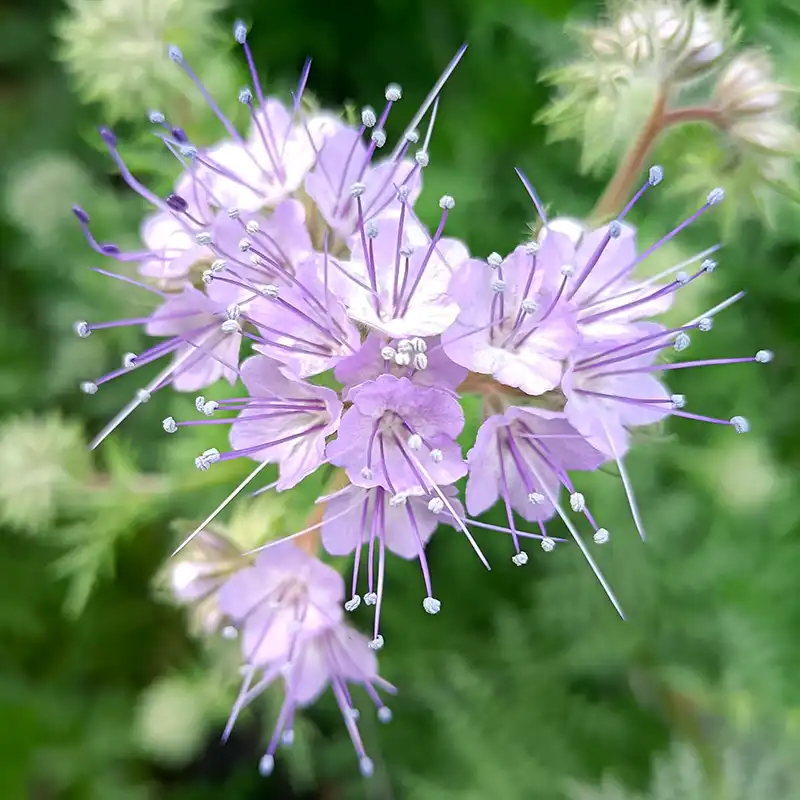The wonderful scent of a flowering hyacinth is inseparable from spring. With its clusters of bright flowers that start blooming in early spring, they are pretty much a sign of all the magnificent things yet to come in your garden or home. No wonder this beauty - which is more difficult to grow than you might think - remains a popular choice for many people.
Hyacinths are commonly grown as ornamental plants in gardens, parks, and indoor settings. They are often planted in flowerbeds, borders, or containers to add a burst of color and fragrance to the surroundings. Hyacinth flowers are also popular for cut flower arrangements and are used in floral displays and bouquets.
Hyacinth: What You Need to Know About Hyacinth Flowers
Hyacinth is a bulbous flowering plant that belongs to the genus Hyacinthus in the Asparagaceae family. It is native to the eastern Mediterranean region and is widely cultivated for its beautiful and fragrant flowers.
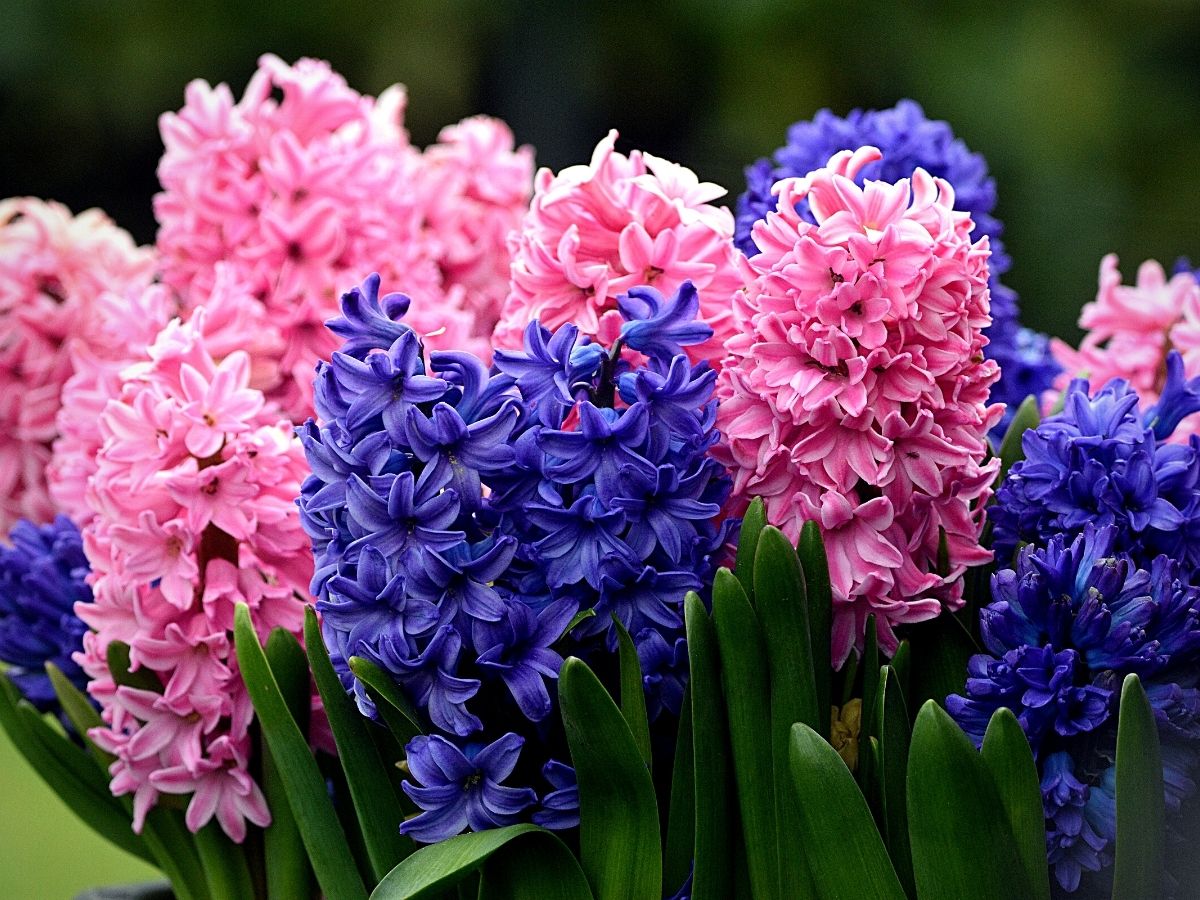
Photo by artellliii72
The hyacinth plant typically grows from a bulb and produces tall, erect stems with dense clusters of flowers. The flowers are bell-shaped and come in a variety of colors, including shades of blue, purple, pink, white, and yellow. It is known for its sweet and intoxicating fragrance, which adds to its overall appeal.
The hyacinth bulbs are larger than that of a crocus or tulip. A few long, thick leaves with rounded tips grow from the bulb. During flowering, a stem grows from the center, full of pink, purple, white, yellow, or red flowers.
These flower buds are called nails and they can have up to 50 nails on one stem. Did you know that it's extremely difficult to tell from the bulb which colors a hyacinth is going to be? Most growers solve this problem by giving the plastic container that holds the bulb the same color as the flowers.
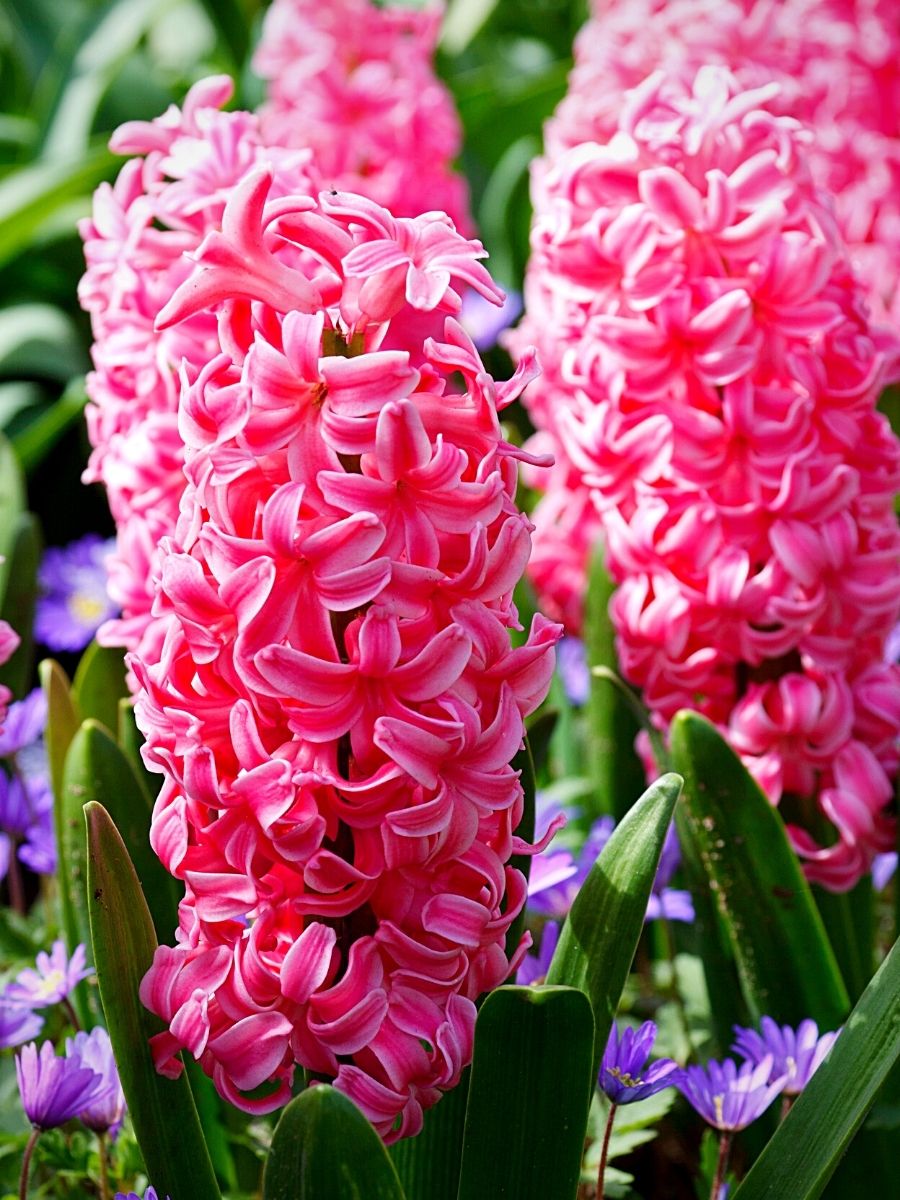
Photo by PublicDomainPictures
Hyacinths are originally a spring bloomer, making the world a bit more fragrant from March to May, but if you keep them indoors you can enjoy them all year round.
Brief History of These Colorful Hyacinth Blooms
Hyacinth flowers have a rich history that is as colorful as their blooms. The hyacinth has a long history as an ornamental plant. The species was originally grown in the Mediterranean, and later in France. The Netherlands is now an important center of hyacinth cultivation. After the Dutch fell in love with the flower they started growing over 2,000 cultivars in the 18th century and became its chief commercial producer.
The name “hyacinth” itself can be traced back to remote antiquity, a relict of a non-Greek language, sometimes called Thracopelasgian, spoken some 4,000 years ago. It is apparently connected with the blue color of water, indicating a reference to the true species, Hyacinthus orientalis, which possessed a blue flower, the plant later developing bud variations of white and pale mauve to deep mauve-purple.
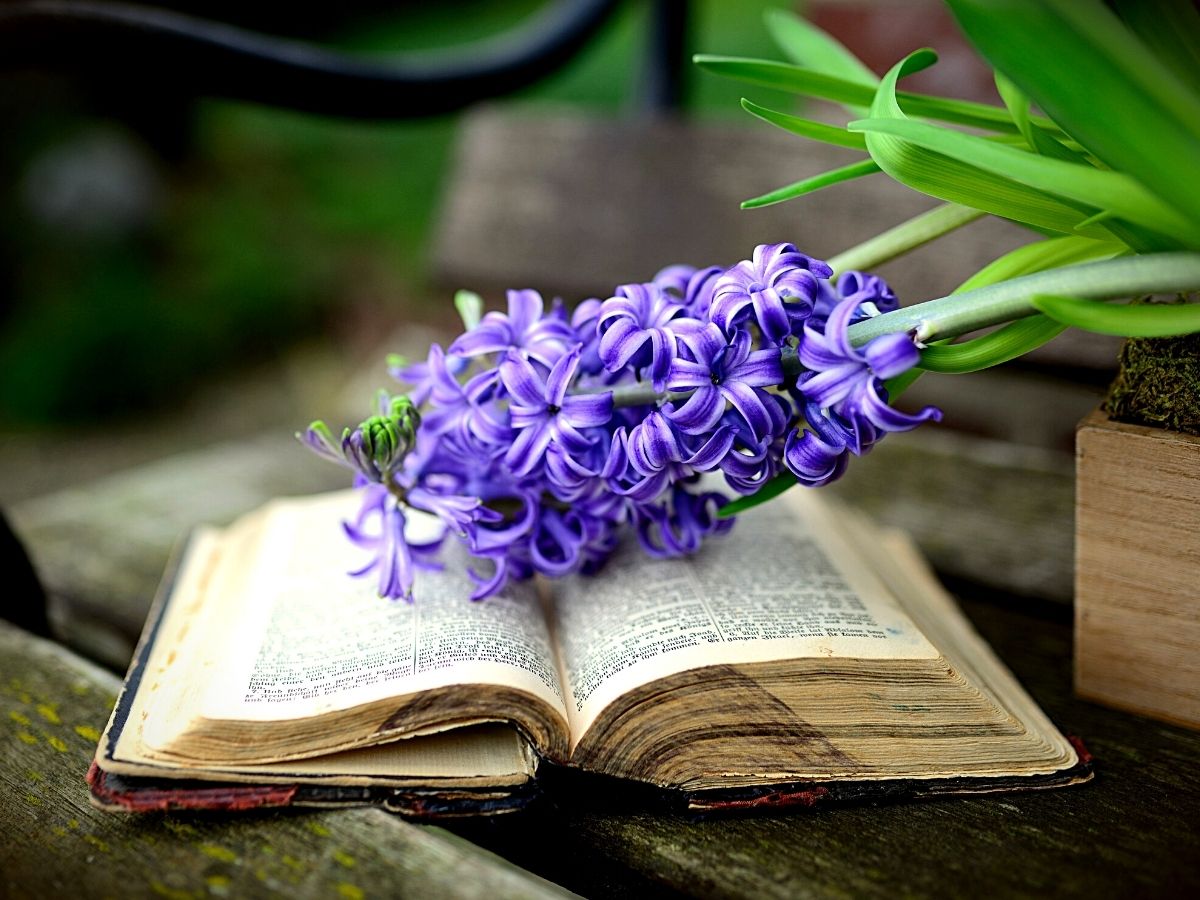
Photo by congerdesign
Hyacinth Meaning
Hyacinths are beautiful flowers with a rich history and symbolism. The meaning associated with hyacinths varies depending on the color of the flower. The meanings of flowers can also vary across different cultures, contexts, and cultural and personal perspectives. But some common meanings include:
- Beauty: Hyacinths are often associated with beauty and are admired for their vibrant colors and delicate petals. They symbolize physical attractiveness and the appreciation of aesthetic appeal.
- Sincerity: Hyacinths are also known to represent sincerity and genuine emotions. They can be used to convey heartfelt sentiments or express deep emotions of love, friendship, or apology.
- Remembrance: In some cultures, hyacinths are associated with remembrance and are often used to commemorate the departed. They can be seen as a symbol of honoring and remembering loved ones.
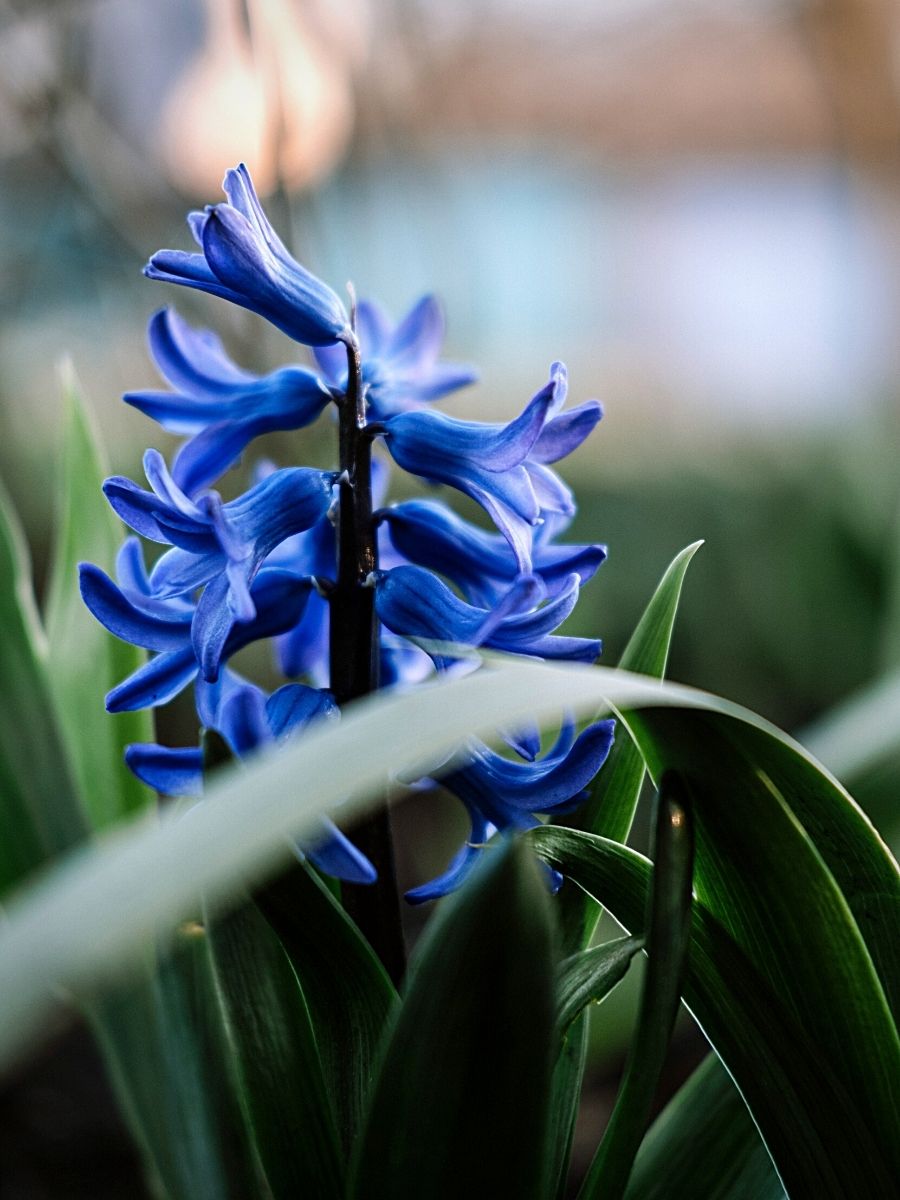
Photo by Farrinni
- Playfulness: The lively and vibrant nature of hyacinths can also represent playfulness and joy. They are often associated with cheerful and carefree spirits.
- Spring and Rebirth: Hyacinths are often considered harbingers of spring and symbolize rebirth and renewal. They are associated with the awakening of nature after winter and the fresh start that comes with the changing seasons.
Are Hyacinths Perennials?
Hyacinths are perennial plants. This means that they are plants that have a life cycle of more than two years. They can survive and bloom for multiple growing seasons.
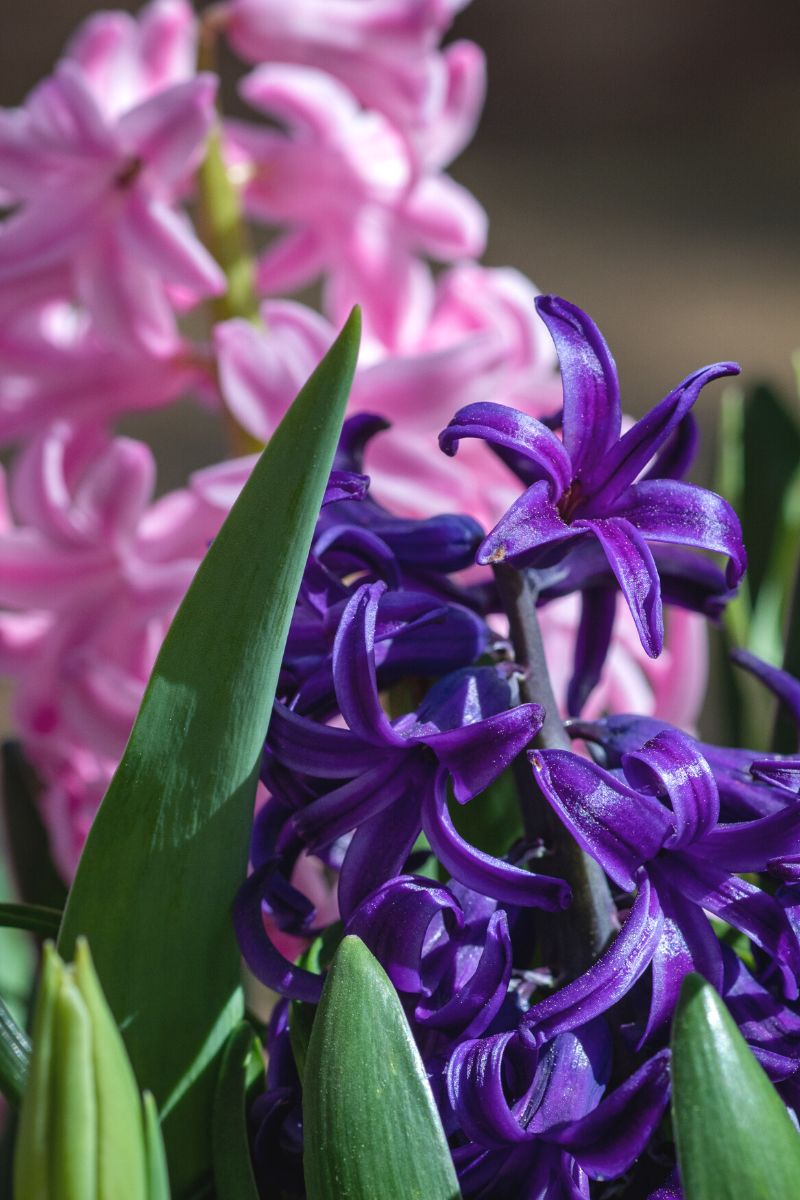
Photo by Joshua J Cotten
Hyacinths grow from bulbs, and after planting, they typically go through a cycle of growth, flowering, and dormancy. During the dormant period, the leaves die back, and the energy is stored in the underground bulb. When favorable growing conditions return, the hyacinth bulb will send up new shoots, leaves, and flowers in the following season.
With proper care and suitable growing conditions, hyacinths can continue to bloom and thrive for several years. They are known for their ability to naturalize, which means they can multiply and spread over time, creating larger clumps or colonies of plants.
It is essential to note that the longevity of hyacinth plants can vary depending on factors such as the specific variety, growing conditions, and care provided. Regular division and replanting of hyacinth bulbs every few years can help rejuvenate the plants and ensure continued vigor and blooming.
Are Hyacinths Poisonous to Cats and Dogs?
Hyacinths are toxic to cats and dogs. The bulbs of hyacinth plants contain substances called alkaloids, particularly in the highest concentration, which can be toxic to pets if ingested. The specific alkaloids present in hyacinths are called tyramine and phenylethylamine.
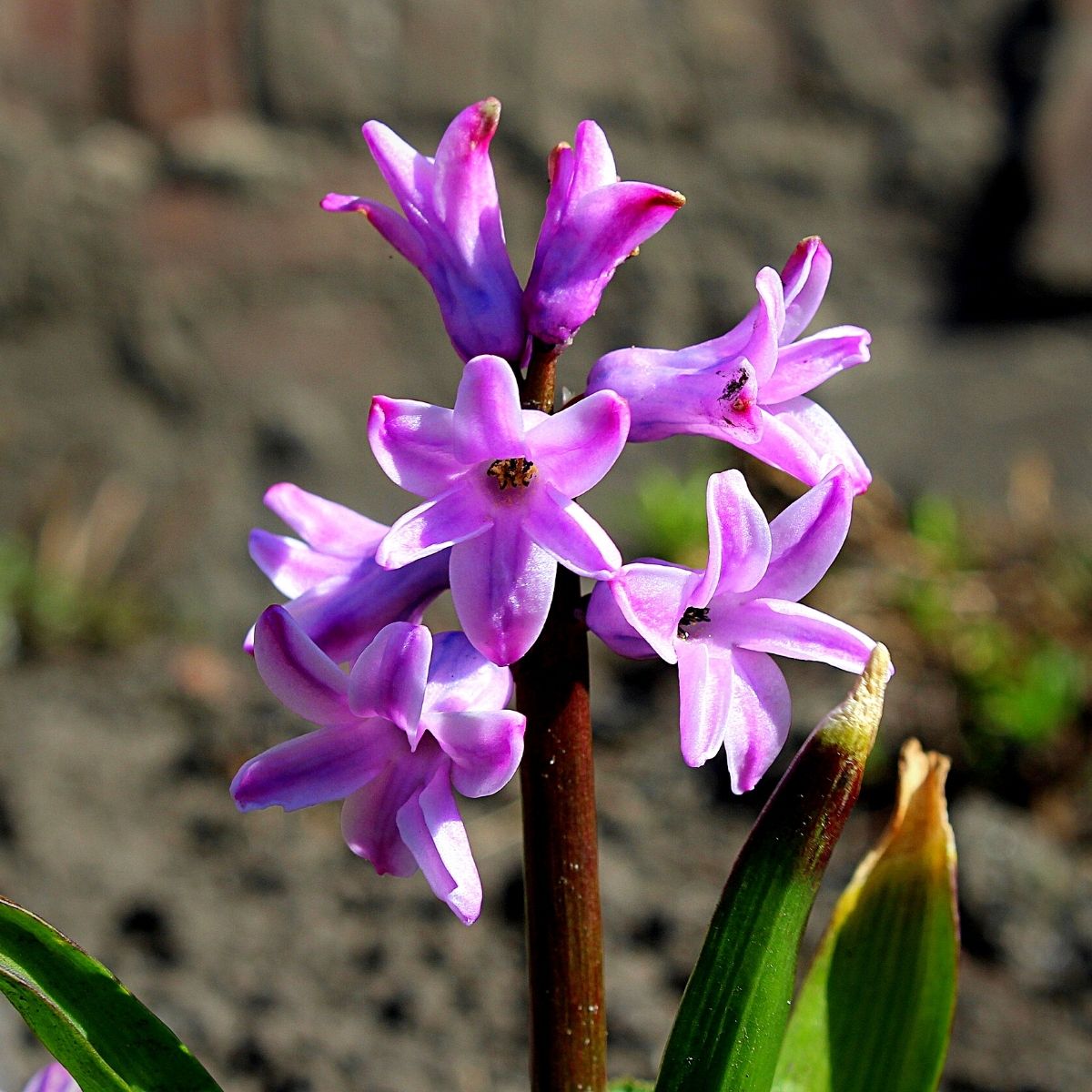
Photo by _Alicja_
If cats or dogs consume any part of the hyacinth plant, including the bulbs, flowers, leaves, or even the water from a vase containing hyacinths, it can lead to various symptoms of toxicity. These symptoms may include vomiting, diarrhea, drooling, abdominal pain, loss of appetite, lethargy, tremors, breathing difficulties, and even cardiac abnormalities in severe cases.
If you suspect that your pet has ingested hyacinth or is exhibiting any unusual symptoms, it's important to contact your veterinarian immediately for guidance. They can provide appropriate advice and treatment based on the severity of the situation.
To ensure the safety of your pets, it is recommended to keep hyacinth plants out of their reach or avoid having them in areas accessible to pets. This will help prevent accidental ingestion and potential toxicity.
How to Care for Hyacinths?
Hyacinth flowers are cherished for their striking appearance, delightful fragrance, and the joy they bring to gardens and floral arrangements. But to ensure that these qualities remain, the hyacinth plant needs to be taken care of. There are guidelines on how to care for the beautiful hyacinths indoors and outdoors.
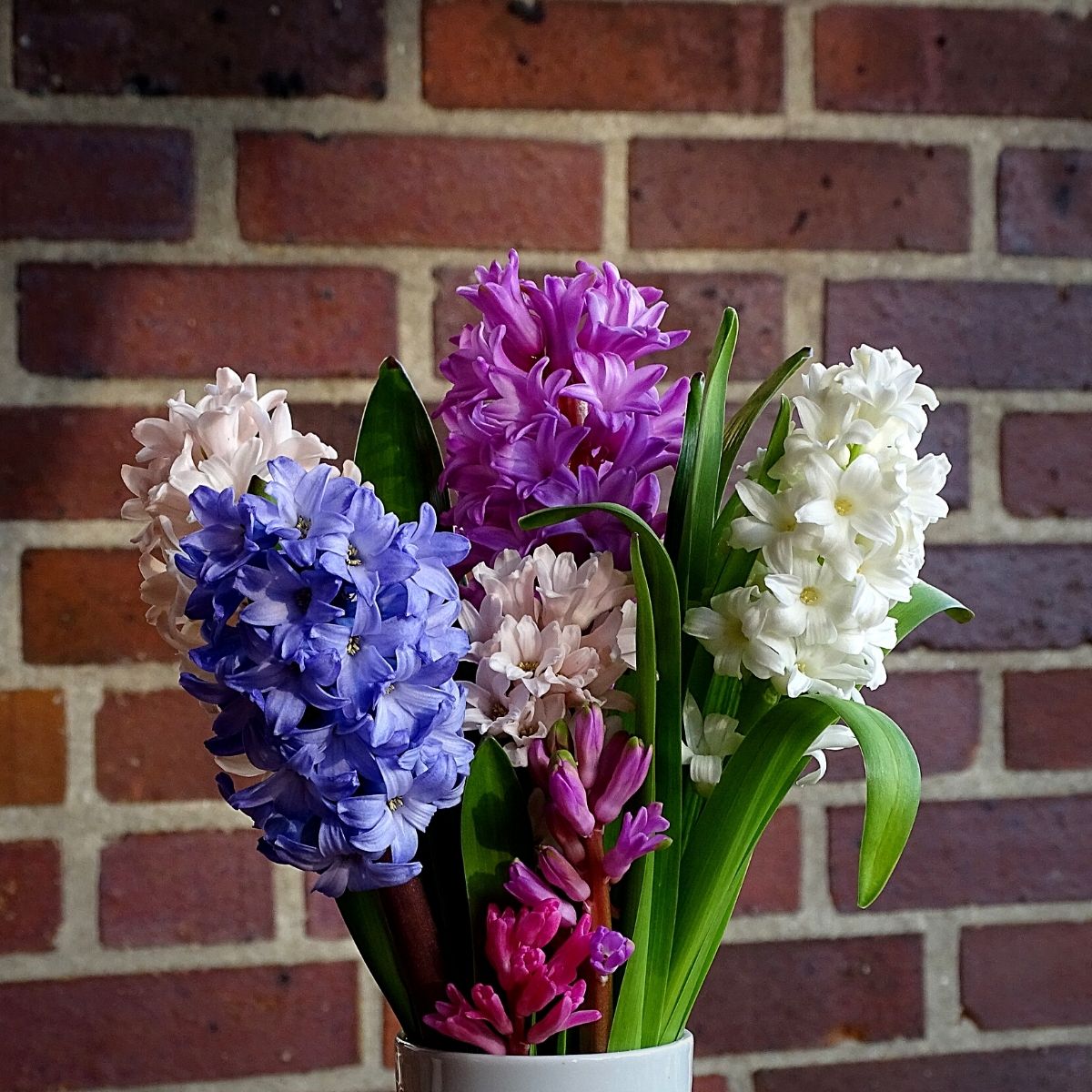
Photo by zimt2003
Hyacinth Care Indoors
Hyacinths prefer bright, indirect light, and thrive in cool temperatures. Besides, hyacinths require consistent moisture, but it's crucial not to overwater them. Following these care guidelines will ensure that you enjoy the beauty and fragrance of hyacinth flowers indoors. Always remember to provide them with adequate light, water, and temperature conditions to ensure their successful growth and blooming.
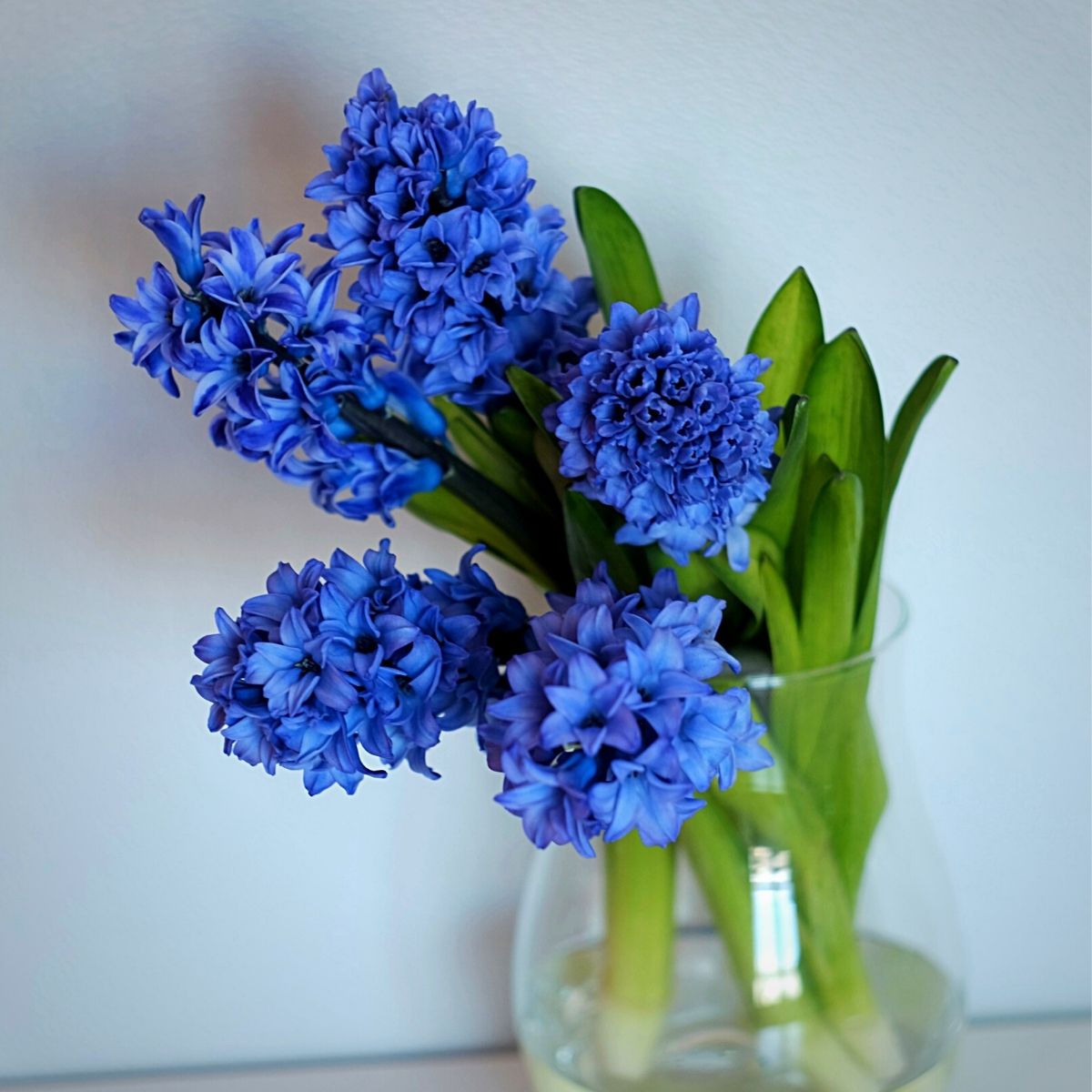
Photo by Aleksandra Sapozhinkova
Indoor Hyacinth Water Requirements
Proper watering is crucial for indoor hyacinths to thrive. When watering your indoor hyacinth, ensure that the soil is consistently moist but not waterlogged. Allow the top inch of soil to dry out slightly between waterings to prevent overwatering and root rot.
Indoor Hyacinth Light Requirements
Indoor hyacinths require bright light to flourish and produce vibrant blooms. Place your hyacinth in a location where it can receive ample sunlight, preferably near a south-facing window. If direct sunlight is not available, provide bright indirect light to mimic the conditions of their natural habitat.
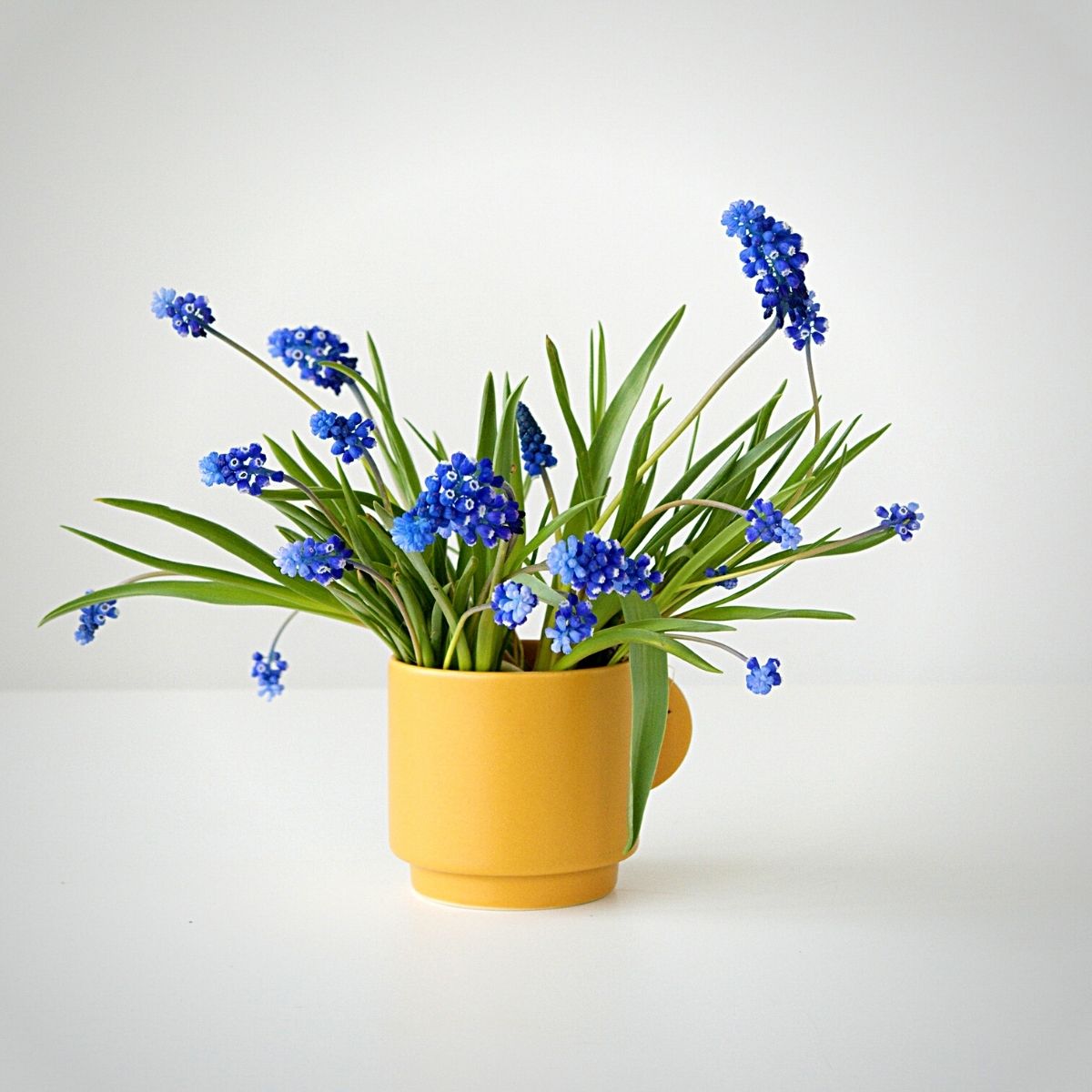
Photo by Anna Nekrashevich
While hyacinths enjoy bright light, it's important to avoid exposing them to intense, direct sunlight for prolonged periods, as it can cause their delicate blooms to fade or wilt. If the light in your home is too strong, you can use sheer curtains or blinds to filter the light and provide a more moderate environment for your hyacinth.
If you notice your hyacinth leaning or stretching towards the light, rotate the pot periodically to ensure even growth. This will help the plant maintain its upright posture and prevent it from becoming lopsided.
Indoor Hyacinth Soil Needs
Hyacinths grown indoors require a well-draining soil mix that retains moisture while preventing waterlogging, as excess moisture can lead to root rot. A recommended soil mix for hyacinths is a combination of potting soil, perlite or sand, and organic matter such as compost or peat moss. This blend provides adequate drainage while retaining the necessary moisture for the hyacinth's roots.
When planting or repotting your indoor hyacinth, ensure that the soil is loose and well-aerated. This allows for proper root development and prevents compaction that could impede growth. It's important to choose a pot with drainage holes to allow excess water to escape and prevent waterlogged soil.
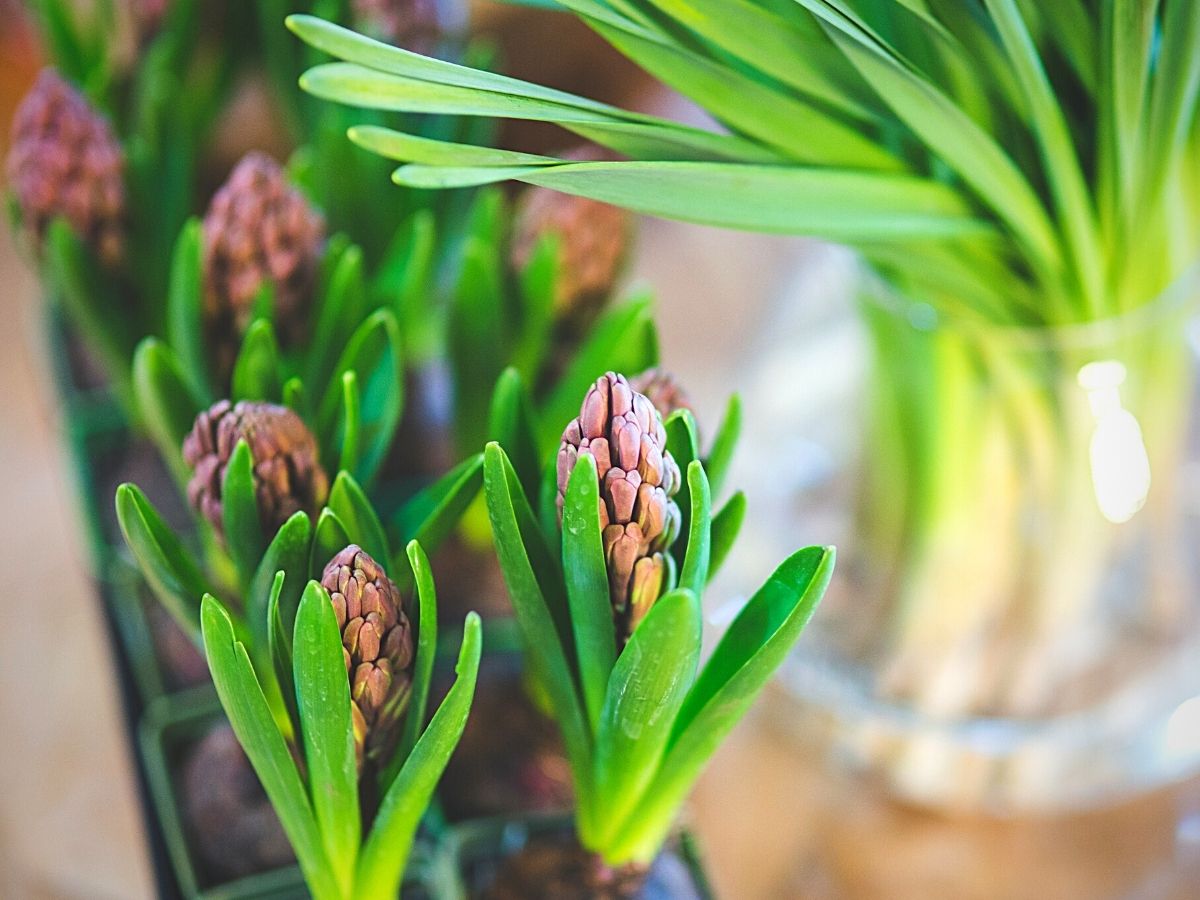
Photo by Kaboompics.com
During the growing season, monitor the moisture levels in the soil regularly. Keep the soil consistently moist, but avoid overwatering. Allow the top inch of soil to dry out slightly before watering again. This balance helps prevent water-related issues while ensuring the hyacinth receives adequate hydration for healthy growth and the development of beautiful blooms.
Indoor Hyacinth Temperature
Indoor hyacinths have specific temperature requirements for optimal growth and blooming. These beautiful flowering plants prefer cool to moderate temperatures. Ideally, the temperature range for indoor hyacinths should be between 60 to 65°F (15 to 18°C) during the day and slightly cooler, around 50 to 55°F (10 to 13°C), at night.
It's important to avoid exposing indoor hyacinths to extreme temperature fluctuations or excessively high temperatures, as they can negatively impact the plant's growth and flowering. High temperatures can cause the hyacinth's blooms to fade more quickly or may even cause the plant to stop flowering altogether.
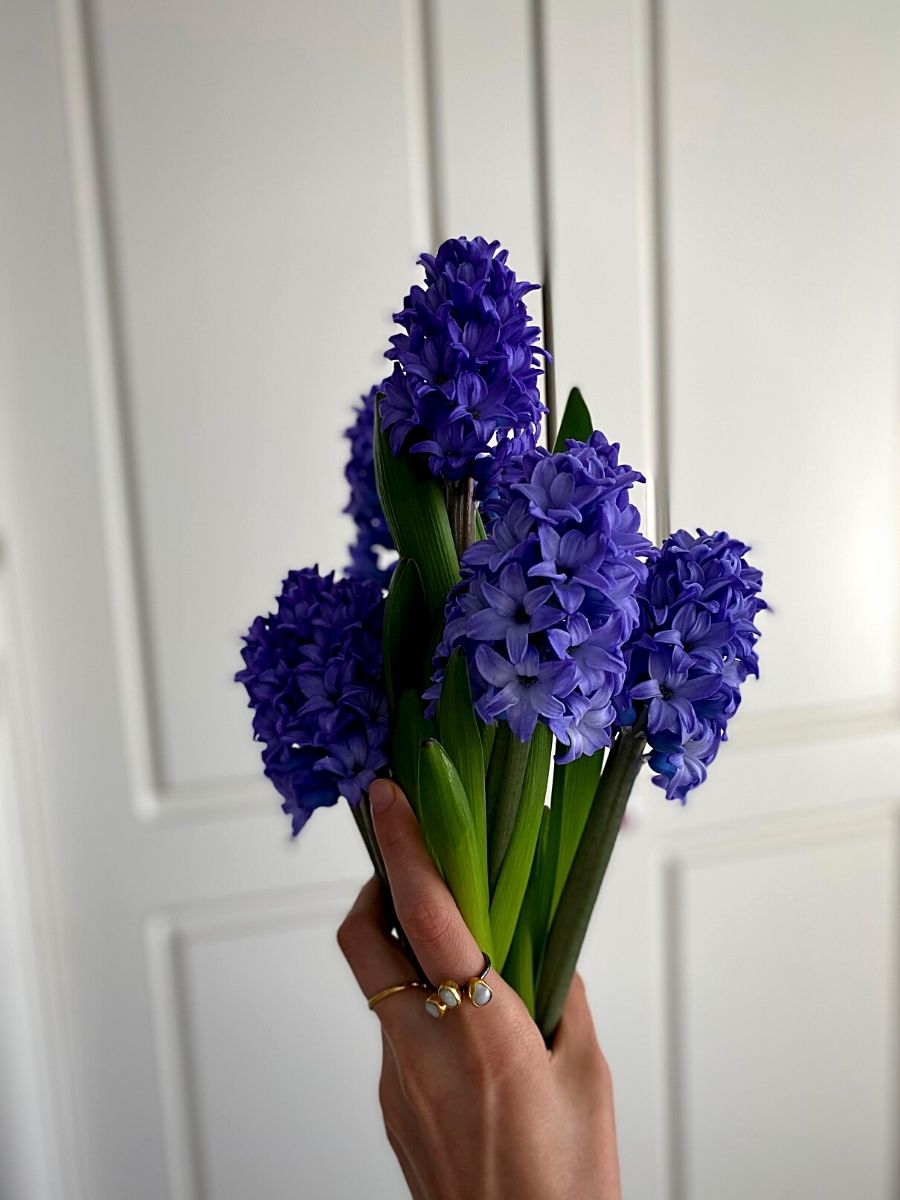
Photo by Lalezarfa
Therefore, it's best to keep the hyacinth away from direct sources of heat, such as radiators or heating vents. Maintaining a consistent and moderate temperature will help the indoor hyacinth thrive. If necessary, you can place the plant in a cooler room or near a window with cooler temperatures during the night.
Indoor Hyacinth Fertilizer
Fertilizing indoor hyacinths is important to provide them with the necessary nutrients for healthy growth and vibrant blooms. When it comes to fertilizing, there are a few key considerations to keep in mind.
First, it's recommended to start fertilizing indoor hyacinths once they have established their root system and started to produce foliage. This typically occurs after the flowers have bloomed and the plant is actively growing. Avoid fertilizing immediately after planting or when the plant is dormant.
Choose a balanced water-soluble fertilizer, such as a 10-10-10 or 20-20-20 formulation, that contains essential nutrients like nitrogen (N), phosphorus (P), and potassium (K). Follow the manufacturer's instructions for the appropriate dilution ratio.
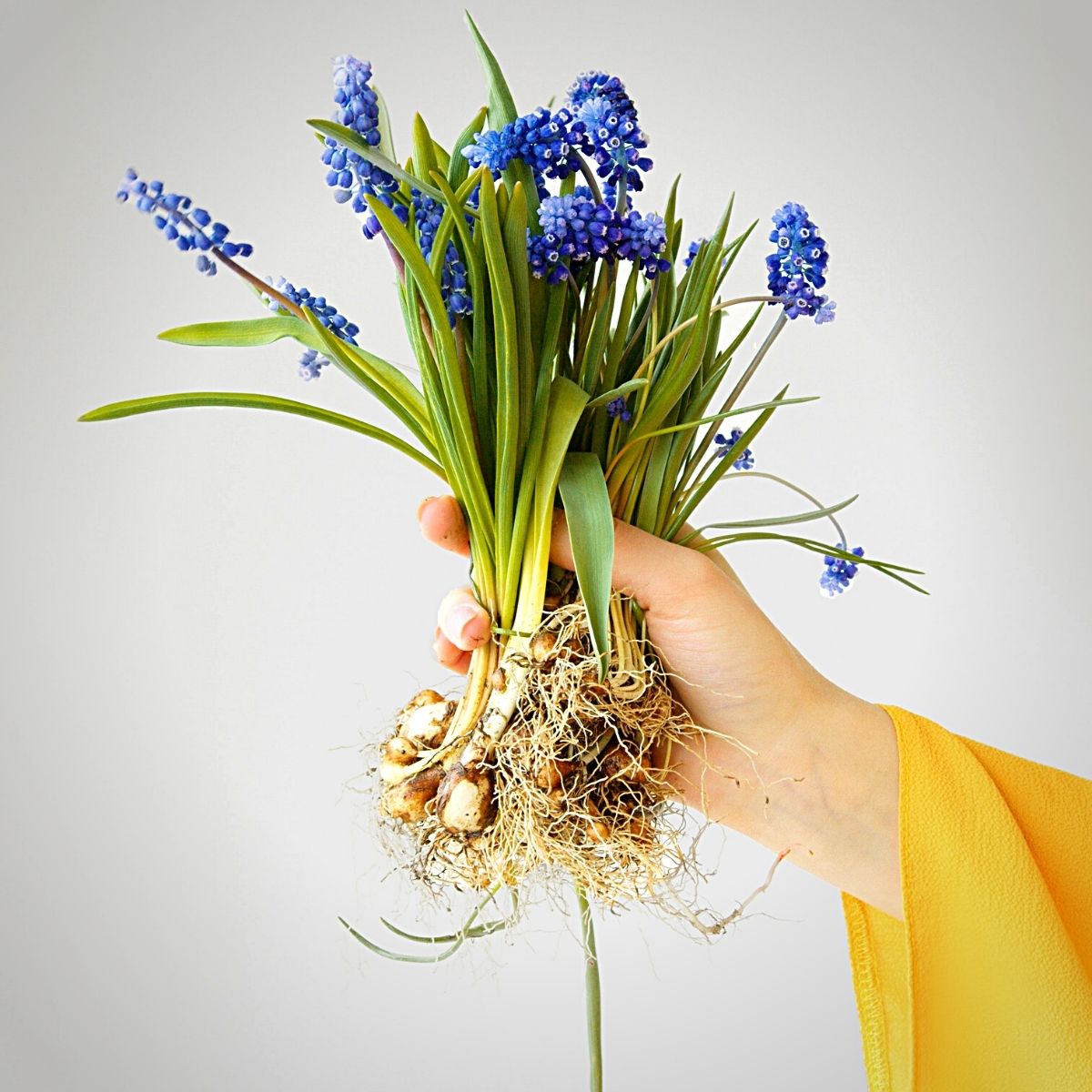
Photo by Anna Nekrashevich
Apply the fertilizer every two to three weeks during the active growth period. Dissolve the fertilizer in water and water the hyacinth with the solution, ensuring thorough coverage of the soil. Be careful not to over-fertilize, as excessive nutrients can lead to burning the roots or encouraging lush foliage growth at the expense of blooms.
As the hyacinth finishes its growth cycle and enters a period of dormancy, typically after the foliage has yellowed and withered, cease fertilization. During this time, the plant will naturally draw upon stored nutrients and prepare for its next growth phase.
Hyacinth Care Outdoors
To ensure that hyacinths thrive in your outdoor space, proper care is essential. From watering and light requirements to soil, temperature, and fertilizer considerations.

Photo by Joshua J. Cotten
Outdoor Hyacinth Water
Outdoor hyacinths require regular watering, especially during their active growth and blooming periods. The soil should be consistently moist but not waterlogged. When watering, aim to provide enough moisture to reach the root zone without causing water to pool on the surface.
It's important to note that rainfall can contribute to the hydration needs of outdoor hyacinths. Monitor the weather conditions and adjust your watering schedule accordingly. During dry spells or in areas with limited rainfall, you may need to supplement with additional watering.
Outdoor Hyacinth Light
Hyacinths thrive in full sun to partial shade conditions. They require at least six hours of direct sunlight each day to promote healthy growth and vibrant blooms. Adequate sunlight helps the plant produce energy through photosynthesis, ensuring robust flower development.
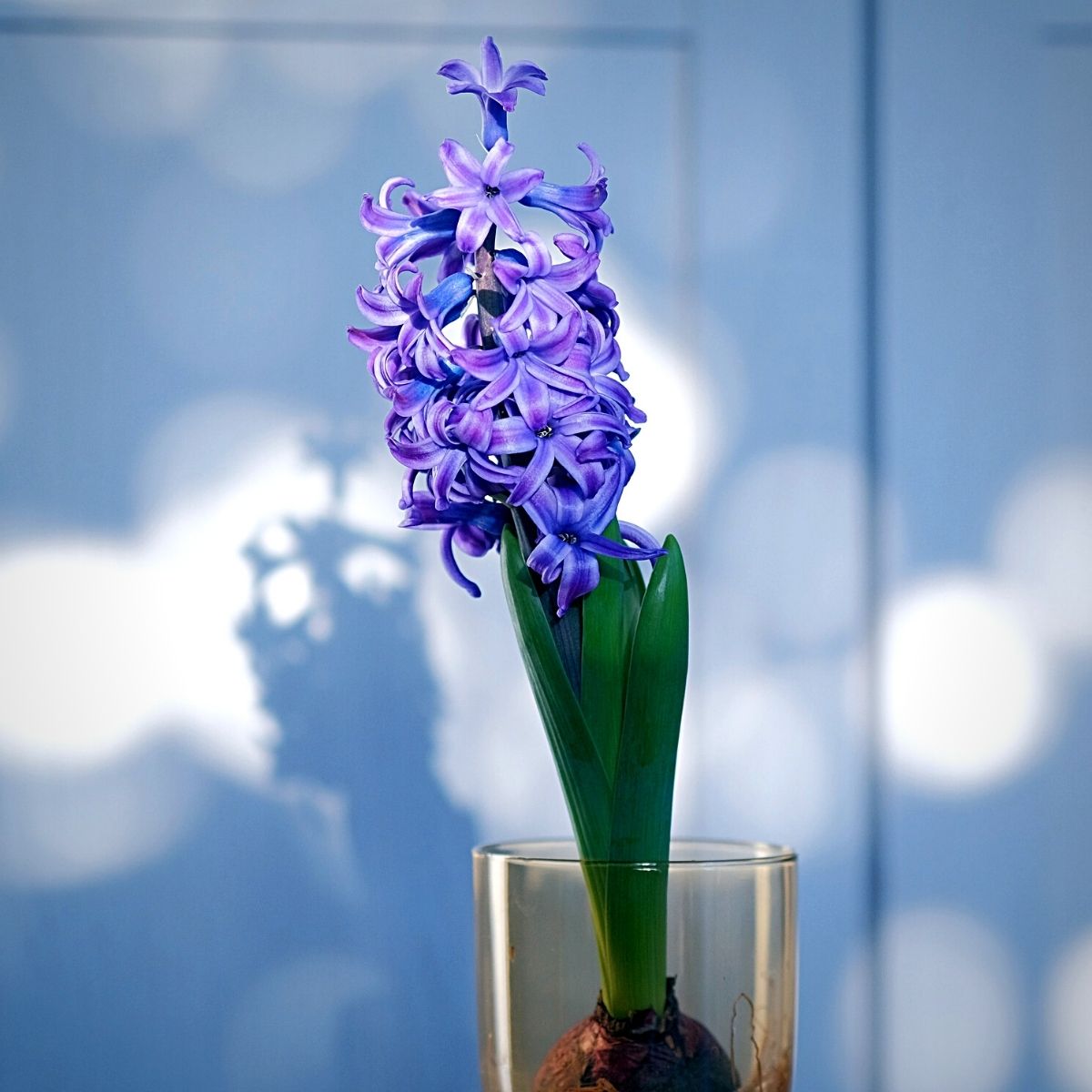
Photo by 8kka ame
If you're wondering whether hyacinths need full sun or can tolerate some shade, it's best to lean towards providing them with as much sunlight as possible. However, in warmer regions or areas with intense afternoon sun, some afternoon shade can be beneficial to prevent the blooms from fading too quickly.
Outdoor Hyacinth Soil
Well-draining soil is crucial for the success of outdoor hyacinths. They prefer loamy or sandy soil with good drainage to prevent waterlogging and root rot. Amend heavy clay soil with organic matter, such as compost or peat moss, to improve its drainage capabilities.
Before planting hyacinth bulbs, ensure that the soil is loose and free of debris. It's advisable to loosen the soil and remove any rocks or weeds that may impede bulb growth. This preparation creates a welcoming environment for the bulbs to establish roots and thrive.
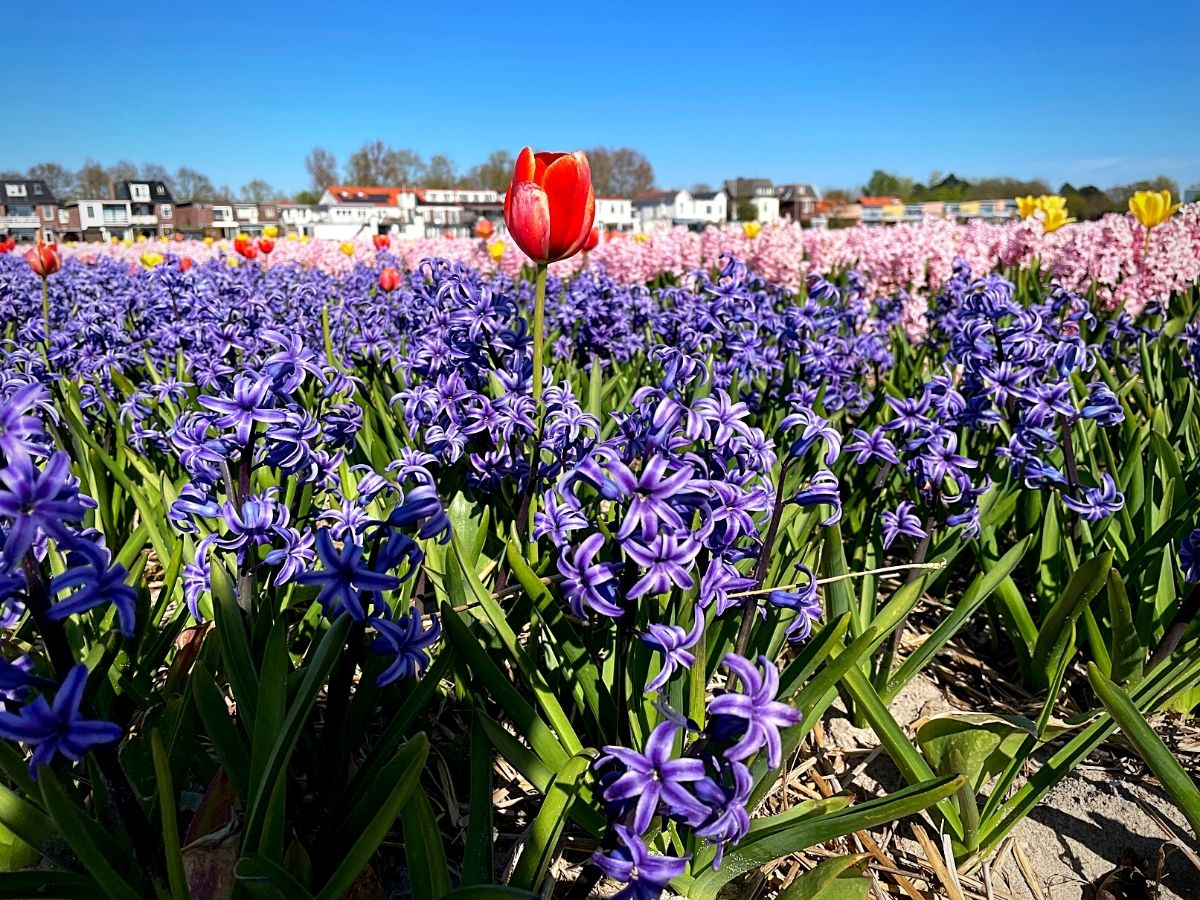
Photo by Maroesja Kuut
Outdoor Hyacinth Temperature
Hyacinths are cold-hardy spring-blooming bulbs that prefer cooler temperatures. They thrive in climates with a pronounced winter season, where they can experience a period of dormancy. Outdoor hyacinths typically require a period of chilling in temperatures between 35 to 45°F (2 to 7°C) for about 12 to 16 weeks to initiate blooming.
In regions with milder winters, you can simulate the chilling period by storing the bulbs in a cool location, such as a refrigerator, prior to planting. This ensures they receive the necessary cold treatment to stimulate flower production.
Once planted, outdoor hyacinths can tolerate cooler temperatures during their growth and blooming period. However, if unexpected frost or freezing conditions are forecasted, it's advisable to protect the plants by covering them with a light blanket or using a frost cloth.
Outdoor Hyacinth Fertilizer
Fertilizing outdoor hyacinths is beneficial for promoting healthy growth and vibrant blooms. Before planting the bulbs, incorporate a slow-release bulb fertilizer or compost into the soil to provide a nutrient-rich foundation.
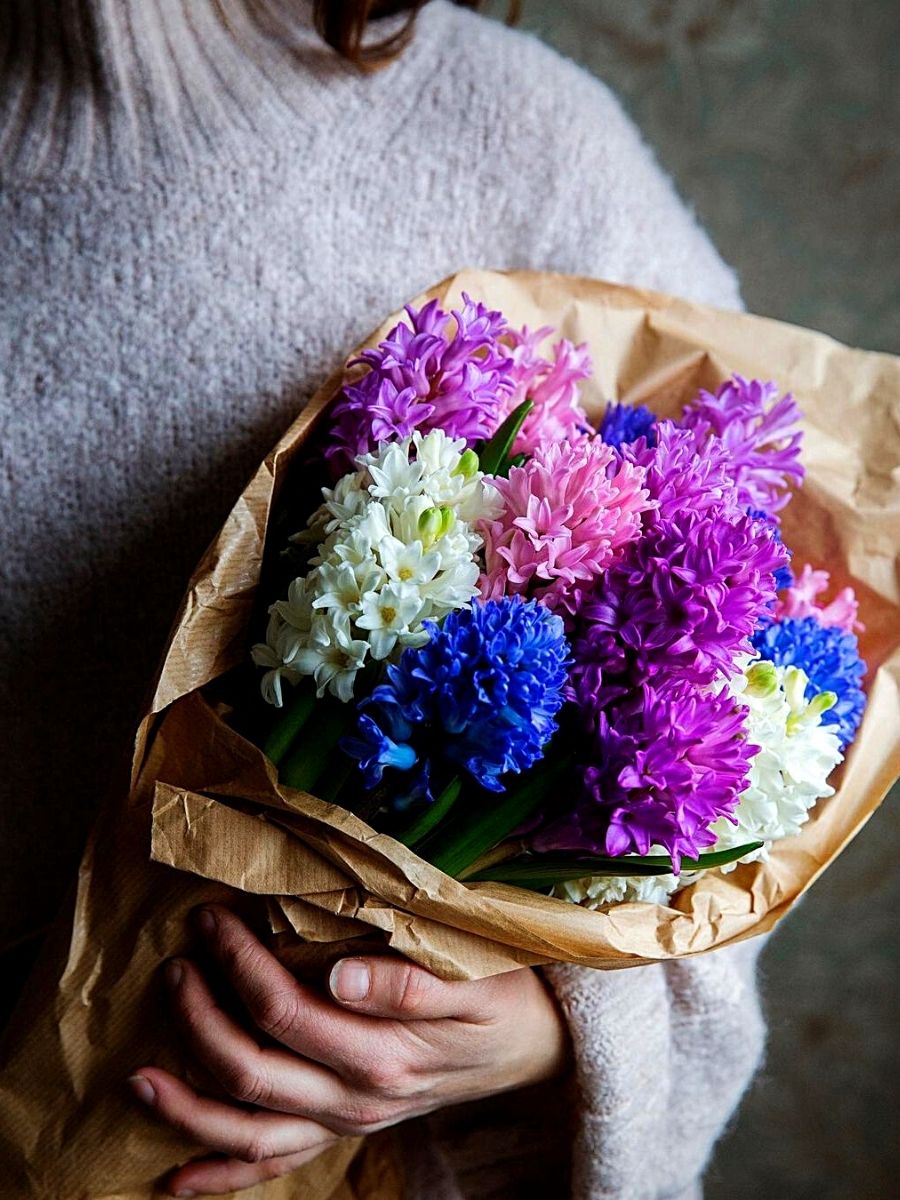
During the growing season, you can supplement with a balanced granular fertilizer, such as a 10-10-10 or 20-20-20 formulation, in early spring when the foliage emerges. Follow the package instructions for the appropriate application rate and distribute the fertilizer evenly around the plants, being careful not to let it touch the leaves or bulbs.
Avoid over-fertilizing, as excessive nutrients can lead to soft, leggy growth and reduced flower production. Always water the plants thoroughly after fertilizing to ensure the nutrients penetrate the root zone.
How to Grow Hyacinths
Hyacinths can be grown well in different environments. You can choose to grow hyacinths in pots outside or indoors in water.
How to Grow Hyacinths in Pots
Growing hyacinths in pots allows you to enjoy their beauty up close and easily move them around your outdoor space.
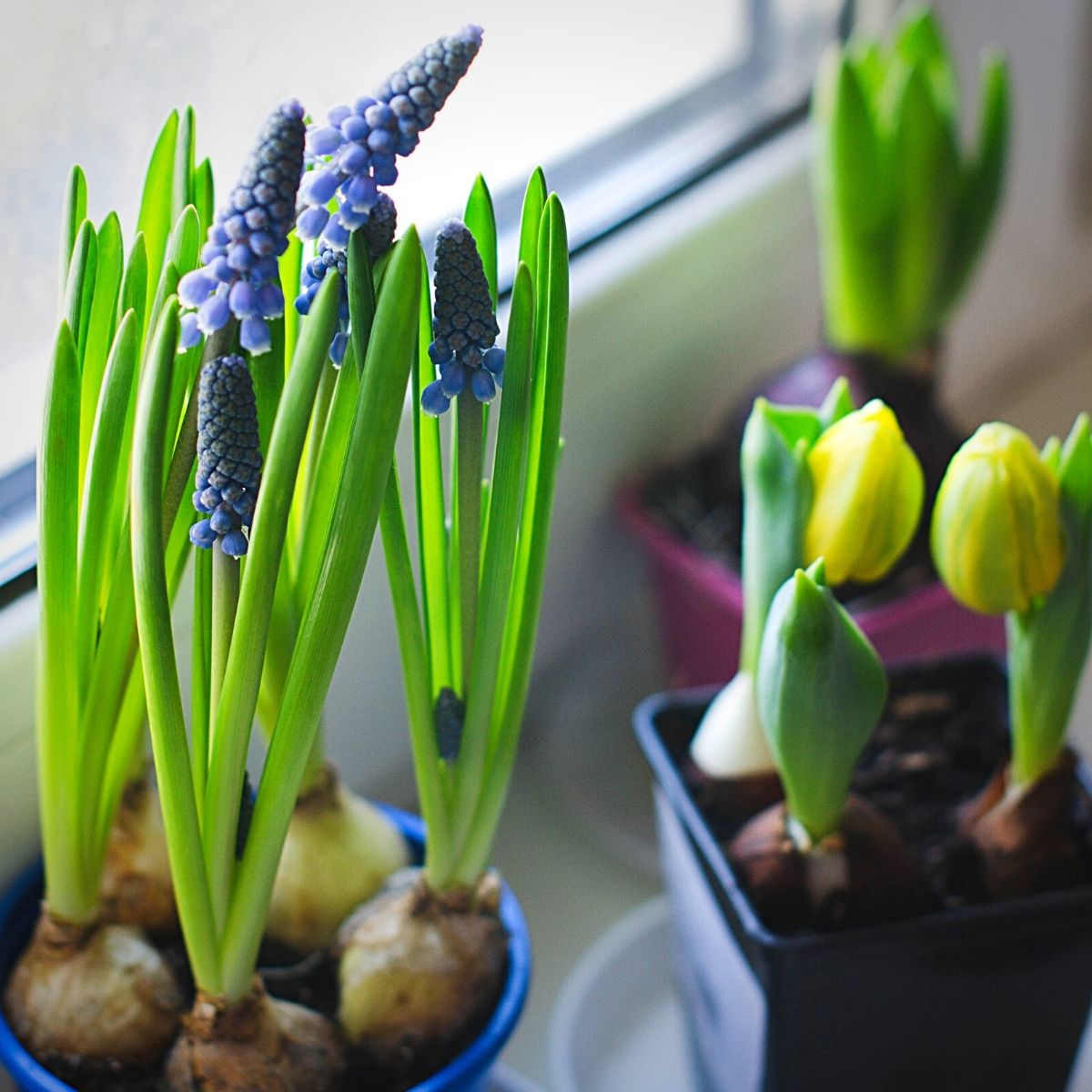
Photo by Nika Benedictova
Select a pot that is at least 6 to 8 inches deep and has drainage holes to prevent waterlogging. Hyacinth bulbs need well-draining soil to thrive. Fill the pot with a well-draining potting mix or a blend of garden soil, sand, and compost. Ensure the soil is loose and crumbly, allowing for good root growth. Place the hyacinth bulbs in the pot with the pointed end facing upward. Plant them about 4 to 6 inches deep and space them a few inches apart to give them room to grow.
After planting, water the bulbs thoroughly to settle the soil. Then, water them regularly, keeping the soil moist but not overly wet. Avoid overwatering, as it can lead to bulb rot. Place the pot in a location that receives full sun to partial shade. Hyacinths require at least six hours of direct sunlight daily to produce robust blooms. If necessary, provide some shade during the hottest part of the day to prevent the flowers from fading.
As the hyacinths grow, ensure the soil remains moist. Apply a balanced fertilizer once or twice during the growing season to provide the necessary nutrients. Deadhead the spent blooms to redirect the plant's energy towards bulb development.
How to Grow Hyacinths in Water
Growing hyacinths in water is a unique and captivating way to enjoy their blooms indoors.
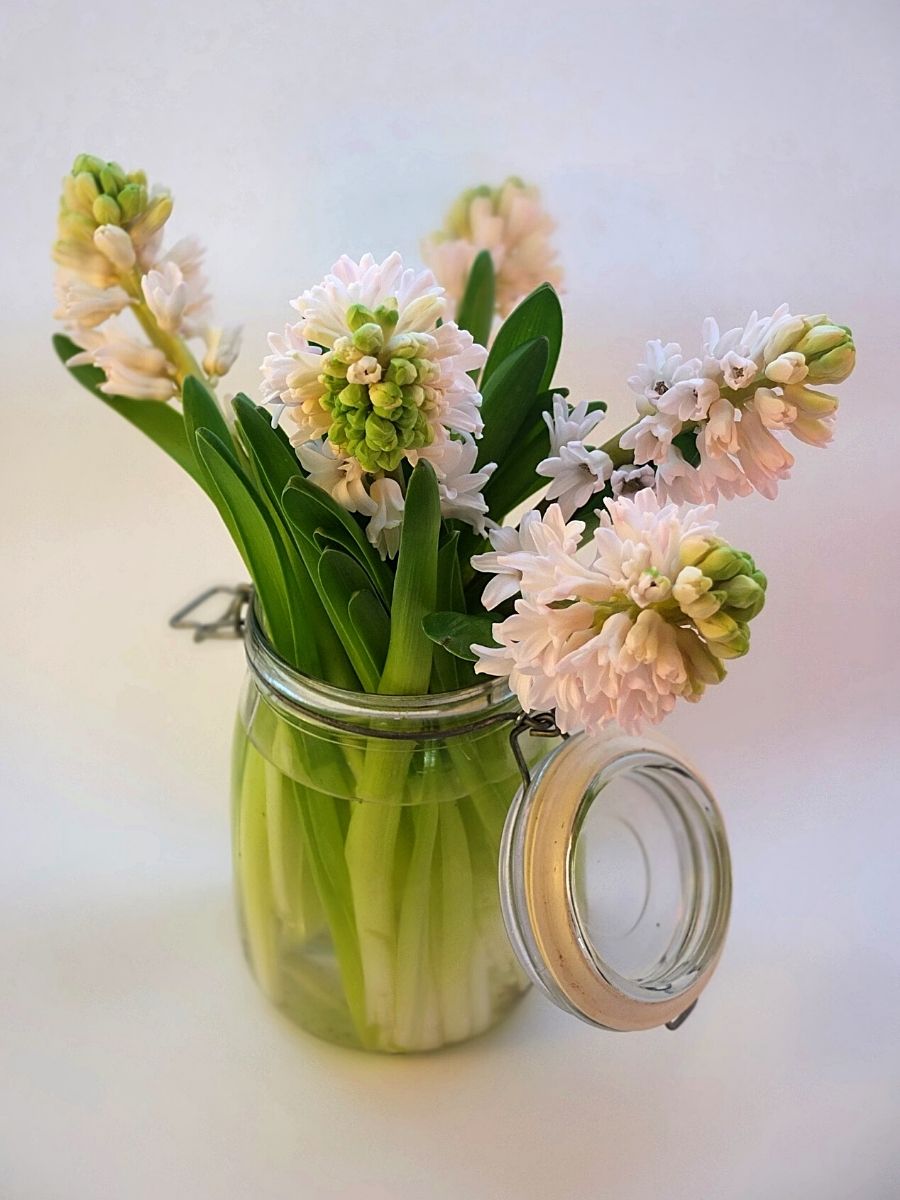
Photo by CallyL
Start by selecting a glass or clear container that is tall enough to hold the hyacinth bulbs and allow the roots to grow freely. Make sure the bottom of the bulb doesn't touch the water. Position the hyacinth bulbs in the container, ensuring they are in contact with the water but not submerged. You can use pebbles or marbles to help support the bulbs while keeping them above the waterline.
When growing hyacinths indoors, place the container in a bright location with indirect sunlight. Avoid exposing the bulbs to direct sunlight, as it can cause the water to heat up and harm the roots. Check the water level regularly and ensure it remains just below the base of the bulbs. Add fresh water as needed to maintain the desired level.
Keep the hyacinths in a cool room with temperatures around 60 to 65°F (15 to 18°C). Monitor the water quality and change it every two weeks to prevent stagnation and the growth of algae. Within a few weeks, the hyacinth bulbs will start to produce roots and grow foliage. As the flowers emerge, delight in their captivating fragrance and vibrant colors. Display them proudly as an indoor centerpiece or decorative accent.
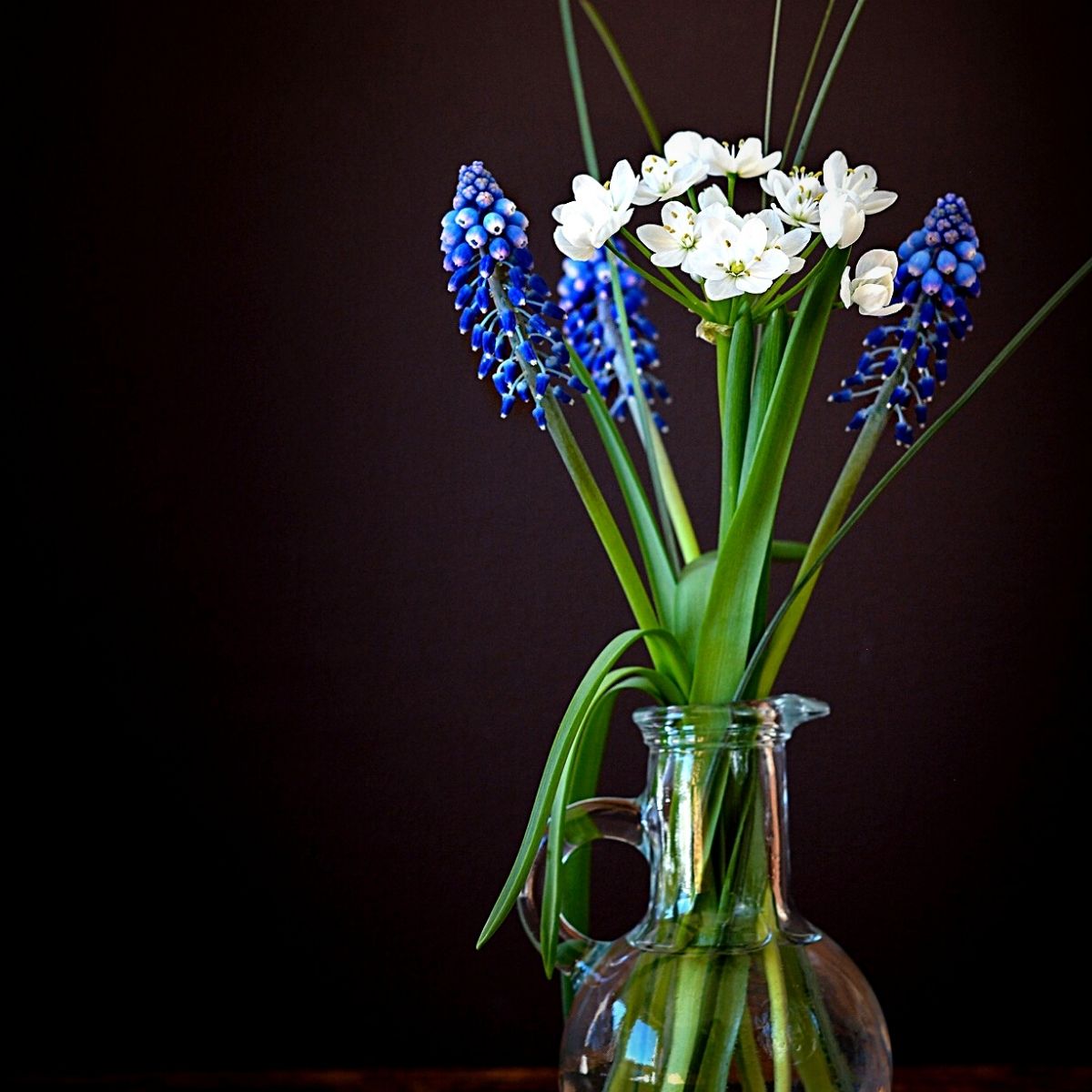
Photo by Pezibear
Whether growing hyacinths in pots outdoors or in water indoors, following these guidelines will help you create a stunning display of these magnificent flowers
Pruning Hyacinths
Pruning hyacinths is a key step in their care, ensuring healthy bulb development and preparing them for the next growing season. After hyacinth bulbs have finished flowering, it's important to follow proper pruning practices.
Use pruning shears or sharp scissors to carefully cut off the spent blooms as the hyacinth flowers fade and start to wilt. This process, known as deadheading, prevents the plant from putting energy into seed production and encourages it to focus on bulb development. After flowering, let the foliage of the hyacinth plant naturally yellow and wither. The leaves play a vital role in replenishing the energy reserves of the bulb for future growth and flowering. Avoid cutting or removing the foliage prematurely as this can weaken the bulb.
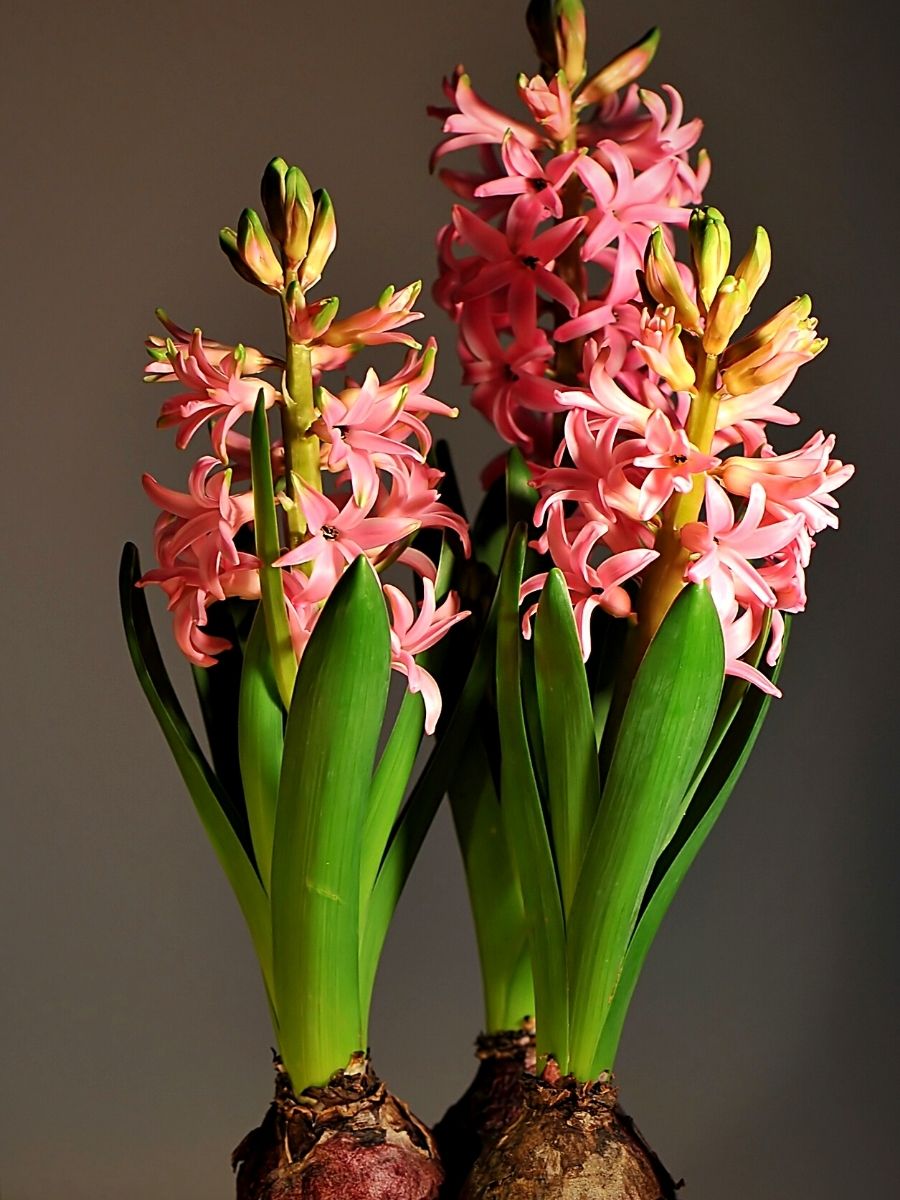
Photo by Claudia Wollesen
What to do with hyacinth bulbs after flowering? Once the hyacinth has finished blooming, gradually reduce the amount of water you provide to help mimic the drier conditions that the bulbs experience in their natural habitat during their dormant phase. Cease fertilizing the hyacinth bulbs after flowering as additional nutrients are not required at this stage, as the plant will draw upon stored energy in the bulb.
Once the foliage has completely yellowed and withered, it can be pruned back to the base of the plant. Gently remove the yellowed leaves, being careful not to damage the bulb or any new shoots emerging from it. If you live in an area with harsh winters or if you prefer to store the bulbs for future use, you can lift the hyacinth bulbs from the ground after the foliage has dried out completely. Clean off any excess soil, trim the roots, and store the bulbs in a cool, dry, and well-ventilated location until the next planting season.
That said, and now that you have practically all the 411 on hyacinths, how about you start thinking about what colors you want to include in your next arrangement or garden!
Featured Image by Pezibear

